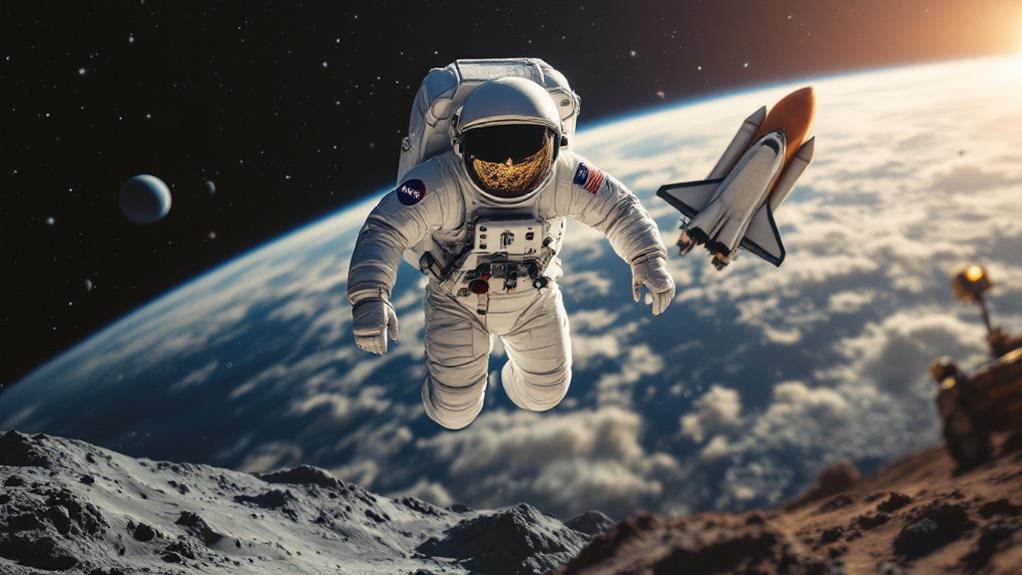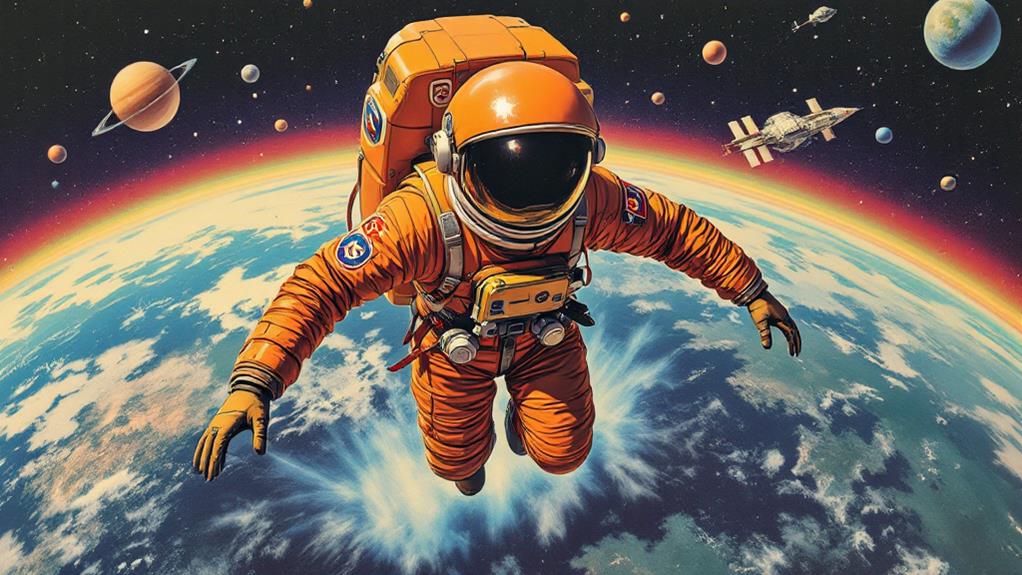Houston Space Science Highlights You Should Explore

Houston stands as America's gateway to the cosmos, offering space enthusiasts unparalleled access to NASA's historic achievements and ongoing missions. You'll find yourself walking the same hallways where flight controllers guided Apollo astronauts to the Moon, or gazing at the massive Saturn V rocket that made those journeys possible.
From touching actual lunar samples to learning how astronauts train for spacewalks, these experiences bring space exploration down to Earth. But there's much more to discover beyond these famous attractions...
The Historic Mission Control: Where Space History Was Made
While NASA's astronauts captured global attention in space, the nerve center of American spaceflight operations quietly made history on the ground in Houston. You'll find this record of American ingenuity at Johnson Space Center, where the original Mission Control Center has directed U.S. crewed missions since Gemini IV in 1965.
Established in 1963 and designated a National Historic Landmark in 1985, this room's significance extends far beyond its walls. It's where flight controllers with an average age of just 28 guided Apollo astronauts to the Moon and helped rescue the Apollo 13 crew. In 2011, the facility was renamed the Christopher C. Kraft Jr. Mission Control Center to honor NASA’s first flight director.
The cultural impact of Mission Control transformed Houston into “Space City” and gave us the iconic phrase “Houston, we’ve had a problem.” When you visit via Space Center Houston’s tram tour, you’ll stand where some of space history’s most dramatic moments unfolded.
Inside Astronaut Training: Experience NASA's Neutral Buoyancy Lab
When astronauts prepare for the weightless environment of space, they train in Houston’s extraordinary Neutral Buoyancy Laboratory at the Sonny Carter Training Facility. The NBL houses a 6.2-million-gallon pool measuring roughly 202 ft × 102 ft × 40 ft with full-scale mockups of ISS modules.
This underwater training simulates aspects of microgravity and is essential for spacewalk preparation. The facility’s control rooms monitor every session as suited crews practice complex tasks for real missions. Water is maintained in a comfortable range for lengthy training runs, allowing NASA’s teams to perfect critical operations before they ever leave Earth.
Touch a Moon Rock: Lunar Samples on Display
After learning how astronauts train, explore something truly extraordinary—actual pieces of the Moon. Space Center Houston houses the world’s largest public display of lunar rocks, including a touchable Apollo 17 sample about 3.8 billion years old, presented in a pure nitrogen environment similar to NASA’s curation labs.
These specimens continue to provide immense scientific value, revealing the age of planetary surfaces and insights into Solar System formation. The collection on public view is carefully protected while giving visitors a rare, tactile connection to lunar exploration.
The Saturn V Rocket: Engineering Marvel of the Apollo Era
Standing 363 feet tall and weighing about 6 million pounds when fully fueled, the Saturn V remains humanity’s most storied Moon rocket. At Rocket Park you’ll see one of only three surviving Saturn V displays—Houston’s example is composed entirely of flight-certified hardware.
The rocket’s five F-1 engines generated 7.6 million pounds of thrust, and its three-stage design enabled precise trans-lunar injections. Developed and managed at Marshall Space Flight Center in Alabama, major stages were manufactured at sites such as Michoud Assembly Facility in New Orleans before shipment to Florida for launch. The Saturn V is still the only launch vehicle to carry humans beyond low Earth orbit.
ISS Mission Operations: How Houston Manages Space Station Life
While the Saturn V made history sending astronauts to the Moon, today’s operations require feats of nonstop coordination. In Building 30’s Mission Control, flight controllers monitor the International Space Station around the clock, tracking everything from life support to crew timelines in modern ISS flight control rooms. The facility—officially named for Christopher C. Kraft Jr.—hosts active control rooms plus training/backup rooms to sustain 24/7 operations with international partners.
Real-time telemetry lets controllers make split-second decisions during contingencies. Frequent simulations keep teams sharp for hardware issues, medical events, and other off-nominal situations that can arise in orbit.
Artemis Program Exhibits: NASA's Return to the Moon
The future of lunar exploration comes alive in Johnson Space Center–related exhibit spaces, where you’ll learn about Artemis—NASA’s plan to return humans to the Moon using the SLS rocket and Orion spacecraft. Interactive displays outline the Gateway lunar outpost and technologies to utilize icy regolith near the South Pole.
A timeline highlights upcoming missions, including Artemis II, now targeted for no earlier than April 2026, a crewed lunar-flyby that will send four astronauts farther into space than any humans have traveled since Apollo.
Space Robotics: From Canadarm to Mars Rovers
As you explore robotics exhibits, you’ll discover the evolution of space manipulators that revolutionized orbital operations. The Canadian-built Canadarm enabled satellite deployment and ISS assembly, later evolving into Canadarm2 with “walking” capability along the station’s truss. The last Shuttle Canadarm flown (STS-135) was shipped to Johnson Space Center for engineering study and possible future reuse.
Nearby displays highlight Houston’s role in autonomous exploration—Mars-rover instruments and planning tools that let teams operate robots across millions of miles, and concepts advancing to Canadarm3 for the lunar Gateway.
Starship Gallery: America’s Space Vehicle Evolution
Visitors entering Starship Gallery trace decades of American spacecraft design—from Mercury and Gemini to Apollo and Skylab—through flown artifacts and training hardware. Highlights include the Apollo 17 Command Module “America,” a full-size Skylab training module you can walk through, and the Lunar Samples Vault with a moon rock you can touch. (This gallery showcases historic spacecraft; it is not a SpaceX Starship exhibit.)
Interactive displays illuminate materials, guidance systems, and life-support advances across programs, setting the stage for today’s commercial craft and future deep-space vehicles.
Spacesuit Design Through the Decades
Tracing humanity's journey beyond Earth’s atmosphere, spacesuit design has evolved dramatically since the dawn of spaceflight. From Mercury’s modified pressure suits to Apollo’s A7L addressing lunar EVA hazards, you’ll see how innovations like Beta cloth and liquid-cooling garments enabled moonwalks and later Shuttle EMUs made modular servicing routine. Today’s commercial designs (e.g., Axiom’s) blend advanced materials with enhanced mobility tailored to modern missions.
Gemini and Apollo variants provided critical life-support redundancy for EVAs, while modern suits emphasize improved range of motion, robust communications, and long-duration safety for ISS and future lunar surface work.
Living in Space: The Science of Human Adaptation
While spacesuits protect during spacewalks, the human body must adapt to microgravity in orbit. Weightlessness causes fluid shifts toward the head, sometimes affecting vision, and the cardiovascular system remodels as it adjusts to reduced load. Bones lose density and muscles atrophy without countermeasures. Many astronauts become up to ~3% taller in space—about 5 cm—as the spine decompresses, though the effect is temporary after landing.
Crew mental health requires care amid isolation and disrupted sleep, and space radiation exposure is carefully tracked. Continuous monitoring and exercise protocols help astronauts adapt safely to this extreme environment.



